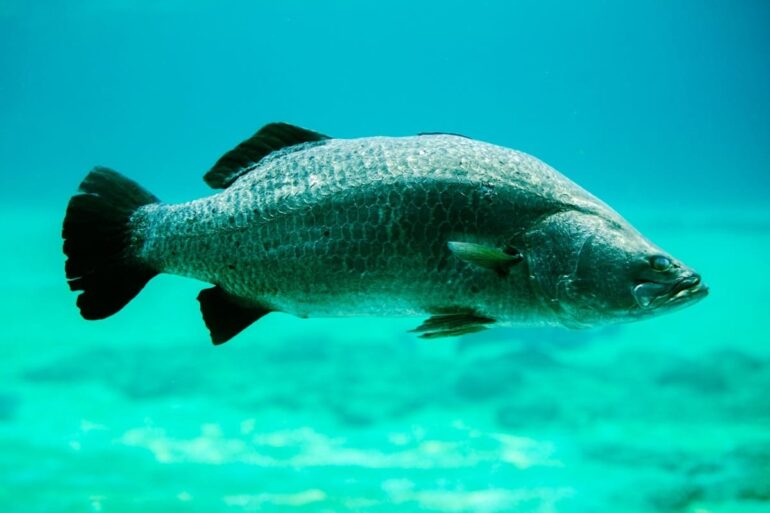TL;DR:
- University of Queensland researcher Jessica Hintzsche is utilizing AI and computer simulations to transform barramundi aquaculture.
- The project aims to create a virtual twin of the farm, allowing simulations of genetic tools and production technologies.
- Integration of AI-driven breeding programs can enhance fish populations and drive sustainable growth.
- Barramundi aquaculture in Australia’s north is projected to reach a value of AUS $1.34 billion by 2030.
- Currently, only 10% of farmed fish globally descend from genetically improved strains.
- AI offers limitless possibilities, from sustainability benefits to modeling various scenarios.
Main AI News:
In the ever-evolving landscape of agriculture, the potential for artificial intelligence (AI) to revolutionize industries knows no bounds. Now, the spotlight is on barramundi aquaculture, as pioneering research from the University of Queensland (UQ) unveils the remarkable prospects of AI-driven advancements in this domain. Driven by the vision of a sustainable and nourished future, UQ’s Queensland Alliance for Agriculture and Food Innovation (QAAFI) has set its sights on integrating cutting-edge software simulations with genetic breakthroughs. This ambitious project, in collaboration with the ARC Research Hub for Supercharging Tropical Aquaculture at James Cook University and MainStream Aquaculture Group, aims to propel the aquaculture sector to new heights.
Leading the charge is Ph.D. candidate Jessica Hintzsche, who believes that harnessing the power of AI and computer simulations is crucial to aligning aquaculture practices with the genetic strides witnessed in land-based agriculture. By creating a virtual twin of the barramundi farm—an immersive 3D digital replica—Hintzsche and her team can meticulously conduct simulations that simulate the impact of various genomic, breeding, and production technologies. This transformative approach allows stakeholders to test innovative strategies, such as parental selection and harvesting techniques, prior to their implementation on the actual farm. With this foresight, producers can confidently chart their course toward prosperity, bolstering fish populations and fostering sustainable growth.
Presently, the aquaculture industry in Australia’s northern region boasts an impressive valuation of AUS $223 million (U.S. $153 million), a figure projected to soar to AUS $1.34 billion (U.S. $862 million) by 2030. However, Hintzsche emphasizes that the integration of genetic technologies into breeding programs has been sluggish. Astonishingly, only a mere 10 percent of farmed fish worldwide descend from genetically enhanced strains. As barramundi aquaculture teeters on the brink of overshadowing traditional fisheries in terms of production, it becomes increasingly urgent to integrate genetic tools into breeding programs. This critical juncture demands swift action and a paradigm shift in the industry’s approach.
Conclusion:
The integration of AI and advanced genetic technologies in barramundi aquaculture represents a significant breakthrough for the market. By leveraging the power of AI and computer simulations, stakeholders can make informed decisions about breeding programs, parental selection, and production technologies. This transformative approach has the potential to boost fish populations, ensure sustainable practices, and meet the rising global demand for farmed fish. As barramundi aquaculture continues its rapid growth trajectory, embracing AI-driven advancements will be essential for industry players to maintain a competitive edge and capitalize on the projected market value of AUS $1.34 billion by 2030.

